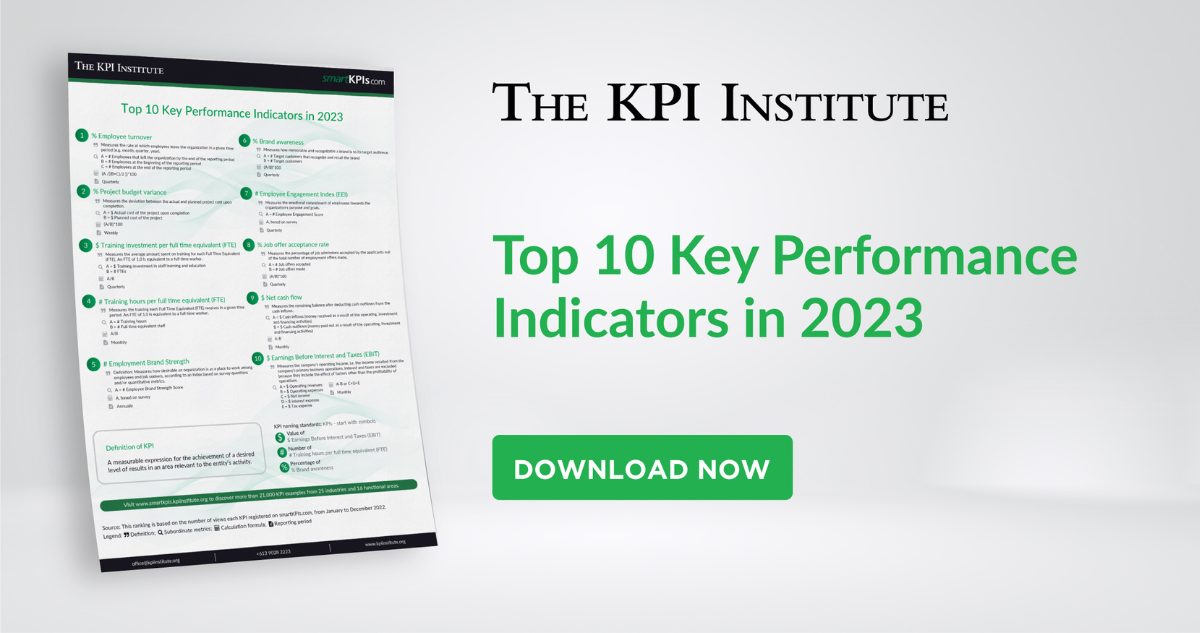
Efficiency boost: top 10 essential production KPIs
November 15th, 2023 Posted by Kimberly Tilar KPIs 0 thoughts on “Efficiency boost: top 10 essential production KPIs”
Key performance indicators (KPIs) are used to understand and improve performance across a diverse range of industries, departments, and teams. For companies that produce goods and commodities, KPIs are absolutely essential as they offer a detailed view of their performance—for both individual employees and the organization as a whole. Production capacity and adherence to production schedules are just a few examples of areas in such an industry where KPIs can be used.
The importance of KPIs is even more prominent nowadays, as production has slowed considerably across the globe, caused by various compounding issues such as semiconductor, iron ore, and chemical shortages just to name a few. Such problems must be dealt with, and a reliable way to determine if the implemented solutions are working is through the use of KPIs.
On top of the production slowdown, many companies that produce goods and commodities are also dealing with the changes brought about by Industry 4.0 —chief of which is the issue of proper integration. New technology and old processes typically don’t mix, a maladjustment that is exacerbated by skills gaps. Fortunately, there are ways to close these gaps, namely through reskilling and upskilling. Reskilling and upskilling are both training-centric methodologies, requiring employees to learn new skills or update their existing skill sets to match the new technology they will be using. This is not enough, however, as the effectiveness of training must be measured, which is where the use of KPIs comes into play.
Due to the importance of KPIs in production, The KPI Institute (TKI) has diligently collated the 10 most widely used production KPIs. This information comes from smartkpis.com, TKI’s comprehensive database comprising 21,334 KPIs, covering 16 functional areas and 25 industries. The top 10 production KPIs are as follows:
- % Production schedule attainment – Measures the rate at which the production target for a given time period has been attained.
- # Units per man-hour – Measures the number of completed units of a product realized per man-hour of work.
- % Production schedule adherence – Measures the deviation between the actual production units and the planned production units for the same period.
- % Production uptime – Measures the percentage of utilized operation time from the planned available production time.
- # Production plants – Measures the number of manufacturing plants (e.g. assemble lines) available and functional for the production process.
- % Recovery yield rate of returned products – Measures the percentage of product returns that were valued again from overall returned products.
- % Production capacity utilization – Measures the percentage of the production volume actually realized from the total production capacity.
- # Ideal run rate – Measures the theoretical ideal production rate expected to be achieved in optimal circumstances.
- # Production capacity – Measures the volume of products that one plant or company can produce with its actual resources in a specific timeframe.
- $ Penalties cost due to unsatisfied demand – Measures the penalty values generated by the inability to satisfy demand.
Keeping track of these metrics can prove pivotal to the survival and success of any production business. For a detailed breakdown of these KPIs, including how to calculate them and when to measure them, download the free poster on the TKI marketplace.


